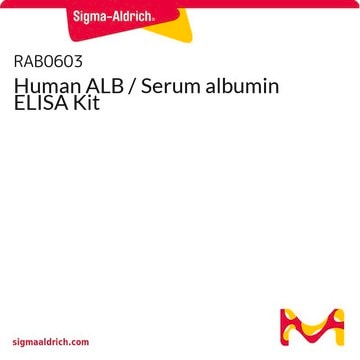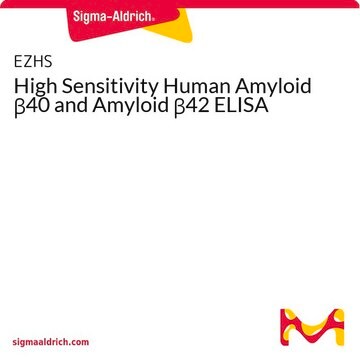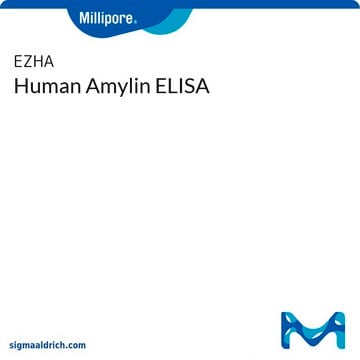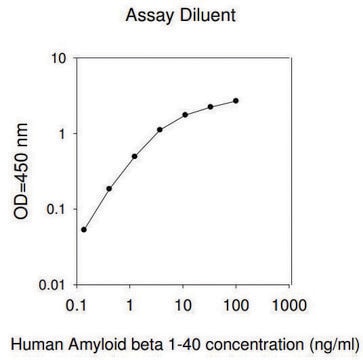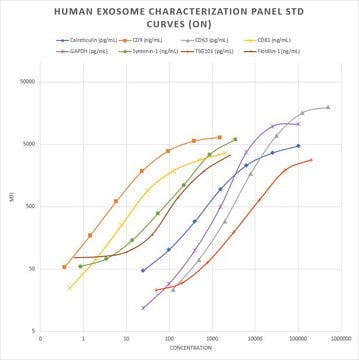EZHS42
Human Amyloid β42 ELISA Kit
measures and quantifies Amyloid β42 levels in 50 μL CSF, cell culture supernatent or plasma
About This Item
Produits recommandés
product name
High Sensitivity Human Amyloid β42 ELISA, This High Sensitivity Human Amyloid β42 ELISA is used to measure & quantify Amyloid β42 levels in Neuroscience research.
Niveau de qualité
Espèces réactives
human
Conditionnement
kit of 1 × 96 wells
Paramètres
50 μL sample volume (Overnight assay)
assay range
sensitivity: 8.0 pg/mL
(50 μl sample size)
standard curve range: 16-500 pg/mL
Technique(s)
ELISA: suitable
Entrée
sample type plasma (K2 EDTA)
sample type serum
sample type cerebrospinal fluid (CSF)
Application(s)
research use
Méthode de détection
colorimetric (450nm/590nm)
Conditions d'expédition
wet ice
Température de stockage
2-8°C
Informations sur le gène
human ... APP(351)
Description générale
Spécificité
Application
Neuroscience
Alzheimer′s Disease
Stockage et stabilité
Autres remarques
Clause de non-responsabilité
Mention d'avertissement
Warning
Mentions de danger
Conseils de prudence
Classification des risques
Aquatic Chronic 3 - Met. Corr. 1 - Skin Sens. 1
Code de la classe de stockage
8A - Combustible corrosive hazardous materials
Certificats d'analyse (COA)
Recherchez un Certificats d'analyse (COA) en saisissant le numéro de lot du produit. Les numéros de lot figurent sur l'étiquette du produit après les mots "Lot" ou "Batch".
Déjà en possession de ce produit ?
Retrouvez la documentation relative aux produits que vous avez récemment achetés dans la Bibliothèque de documents.
Notre équipe de scientifiques dispose d'une expérience dans tous les secteurs de la recherche, notamment en sciences de la vie, science des matériaux, synthèse chimique, chromatographie, analyse et dans de nombreux autres domaines..
Contacter notre Service technique

